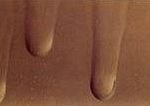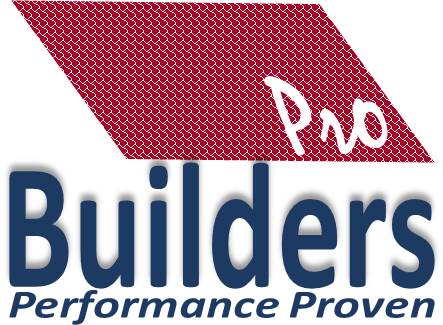 Sag
Sag
Narrow (or wide curtain-like) downward movement of a paint or varnish film; may be caused by the application of too much coating, the collection of excess quantities of paint at irregularities in the surface (cracks, holes, etc.), or excessive material continuing to flow after the surrounding surface has set. Also referred to as runs or tears.
Sand Finish
Rough finish plaster wall, or a paint that has been texturized with sand.
Sanding Sealer
Especially hard first coat that can seal and fill, but will not obscure, the grain of the wood. The surface is then sanded before subsequent coats are applied.
Saponification
A chemical decomposition of a paint’s binder by alkali and moisture from a substrate (e.g., new concrete or fresh plaster). Saponified paint may deteriorate, lose its adhesion, and become discolored.
Scrubbablity
The ability of a coating to resist wearing away or changing its original appearance when rubbed with a brush, sponge, or cloth and an abrasive soap.
Sealant
Often used as a synonym for “caulk.” The word “sealant” usually means a compound that has greater performance than a caulk, i.e., it can accommodate movement in a joint or crack.
Sealer
A liquid coat that seals wood, plaster, etc., and prevents the surface from absorbing paint or varnish. Sealers may be transparent, and can act as primers. Some sealers are designed to be left uncoated.
Secondary Color
Colors formed by mixing together two primary colors. They are: orange, green, and purple.
Self-Cleaning
Certain exterior paints that are designed to chalk relatively quickly to maintain a white, clean appearance.
Semi-gloss Finish
A paint with a gloss level between high gloss and eggshell/satin.
Semi-Transparent Stain
Stain that alters the natural color of the wood, yet allows the grain and texture to show through. The term is generally applied to exterior products, but technically applies also to interior wiping stains used for trim, furniture and floors.
Settling
The sinking of pigments or other solid matter in a paint on standing in a container, with the subsequent accumulation on the bottom of the container.
Shade
A shade is created when black is added to a color. It is a darker variant of a color.
Sheen
A moderately low degree of gloss; gloss with poor distinctness-of-image reflectance. Characteristic where a coating appears to be flat when viewed near to the perpendicular, but appears to be glossy when viewed from a low or grazing angle.
Shellac
Alcohol-soluble, clear to orange-colored resin derived from lac. (Lac is a substance secreted by insects on tree branches, mainly in India.) Used as a sealer and clear finish for floors, for sealing knots, and in “alcohol-based” primers. Thinner is denatured alcohol.
Silane
A silicone-like substance that is added to caulks and sealants to improve their adhesion to glass and aluminum under wet conditions.
Silica
A pigment made from quartz sand that has been crushed or ground. A reinforcing filler for paints; it imparts burnish resistance, sheen uniformity and good flatting.
Silicone
Compound used in the manufacture of binders that is characterized by outstanding heat resistance, high water repellency, and chemical resistance. A key ingredient in some caulks and sealants, and in the formulation of many effective defoamers for latex paints.
Siliconized Acrylic Sealant
Similar to an acrylic sealant, except it has a small amount of silane (hence, its name) added to it, which enhances adhesion to glass and aluminum under wet conditions.
Single-Color Scheme
Utilization of different values of a single color in a decorating scheme. Also called monochromatic.
Size
A liquid composition that prevents excessive absorption of paint or wallpaper adhesive into plaster, wallboard, or a similar porous interior surface.
Skin
The film that forms on the surface of a stored paint or caulk. It is caused by exposure to air.
Softwood
The group of trees (fir, pine, spruce, hemlock) characterized by its needles and being (for the most part) evergreen. The term does not refer to the hardness of the wood.
Solids
Non-volatile matter in the composition of a coating or a caulk, i.e. the ingredients in a coating that, after drying, constitute the dry film. Solids are composed mostly of pigment and binder.
Soluble
The ability of a material to be dissolved in a liquid. For example, sugar is soluble in water.
Solvent
A usually volatile liquid in which a paint’s film-forming particles are dissolved or dispersed.
Spackling Compound
A powder mixed with water or a ready-mix compound that is primarily used to fill large cracks in walls. It dries hard and can be sanded and painted, but does not tolerate much movement in the substrate.
Spar Varnish
Exterior varnish with good water resistance and the capability to resist weathering. Named for its original use on the spars of ships.
Spatter
Droplets of paint that spin or mist off the roller as paint is being applied.
Sponge Painting (Sponging)
Interior painting technique in which natural sea sponges are used to apply or partially remove a “glaze coat” of paint.
Spot-Prime
To apply a primer to those areas where paint has been removed or stripped to the original surface.
Spray
Method of application in which the paint is broken up into a fine mist and directed to the surface under pressure. Specific types of spray equipment are: aerosol, airless, and air assisted.
Spread Rate
The volume of a coating that can cover a given area. The recommended spread rate is usually indicated on the paint can, e.g., 450 sq. ft./gallon (11 m2/l). Spread rate depends on application method and technique, porosity of the substrate, etc., as well as on the nature of the particular coating.
Stain
A partly transparent coating that can color wood without obscuring the grain and/or the texture. Also refers to materials that soil the surface of a coating.
Stain Bleed-Through
When tannin found in certain types of wood (such as cedar or redwood) migrates through the coating, causing discoloration. Also, discoloration from a contaminant on the substrate.
Stain Resistance
The ability of a coating to resist soiling.
Stenciling
A method of applying a design by brushing or sponging paint through a cutout overlay placed on the surface.
Stripping
Removing old paint, varnish, etc., by using paint remover, sandpaper, heat gun, or scraping tools. Also, the removal of wallpaper.
Styrene-Butadiene
A synthetic latex similar to synthetic rubber. Used in certain types of latex paint.
Substrate
Any surface to which a coating or sealant is applied.
Surfactant Leaching
Also called water-spotting and weeping. It is often a tan-colored, glossy residue that can form on the surface when exterior latex paint is applied under conditions that are cool and damp, that result in slow dry of the paint. May not readily wash off, but generally will weather off within a month’s time.
Synthetic
Man-made, rather than occurring naturally.

